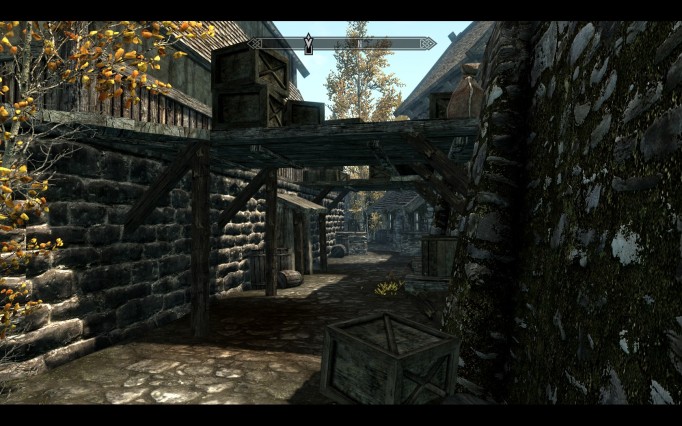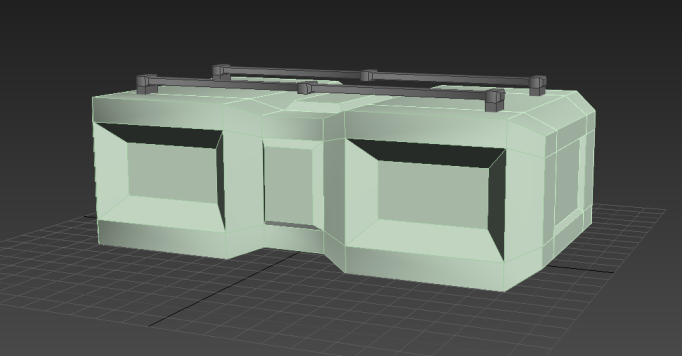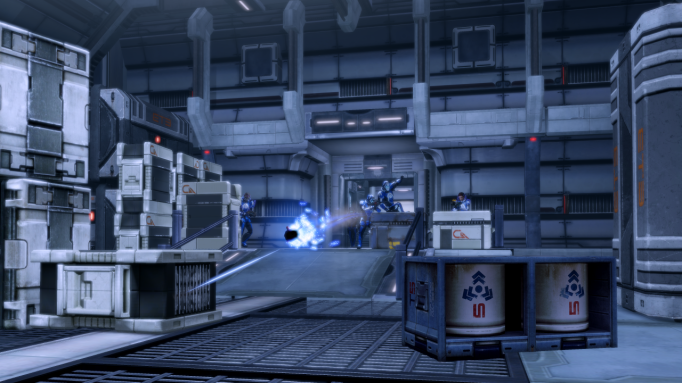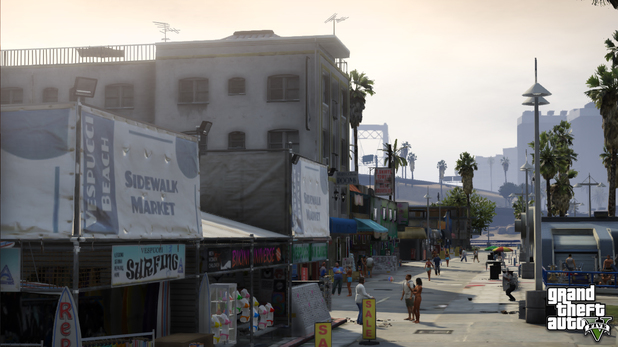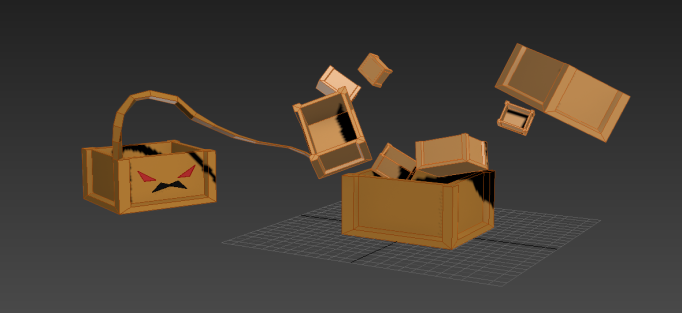This week we modeled three variations of crates, where each was supposed to be inspired by a different theme. These themes were Sci-Fi, Cartoonish, Medieval, Post-Apocalyptic and Urban Contemporary. This was to illustrate how objects may have more or less radically different models to relate the theme.
The three themes that I chose were Medieval, Sci-Fi and Urban Contemporary.
Medieval
The first crate I did was supposed to be within the Medieval theme, and was therefore of a rather simplistic, yet sturdy, design.
I did however realize after a while that this particular type of crate might not be very “Medieval” however, but perhaps more of a Renaissance crate. Medieval crates (at least the ones that have manage to survive the ages) tend to be more like chests with iron fittings.
Also I noted after a while that the box’s lid may be a bit flawed. This type of crate appear to have lids that fit snugly into the opening and are nailed in from the side, through the crate’s sides. Nailing the lid in from the front, as I made it, would prove rather tricky, as the sides of the crate are rather narrow, and the lid is rather thick.
The key characteristics of a medieval theme (actual medieval theme, renaissance) is that items tend to be rather rough and rustic, and generally fairly realistic.
There is also less contrast between man-made and natural elements since these often used the same materials giving similar color palettes and textures.
When it came to color during the middle ages it was used as a status symbol. Something that had vibrant colors was of significance, such as royal attire or artifacts of the church. Not generally crates.
Also, as noted in one of our earlier lectures, before the industrial revolution everything was made by hand, giving everything massive diversity. Differences in items, buildings and so on would have been very common, since individual craftsmen wouldn’t create identical items.
Although with heavy fantasy-tendencies, I picked Skyrim to illustrate a good Medieval-style game. It contains pretty much every characteristic previously mentioned, from rustic realism to diversity in items. Other good examples are The Witcher and Mount and Blade.
Sci-Fi
The second crate I made I intended to be more of a Sci-Fi persuasion. So to do this I decided to go with a “sleeker” design, making the edges and corners angled as well as narrowing the middle of the crate slightly. Additionally indentations on the sides was partially to make the shape more interesting, and would be logical as this would increase durability and give a resistance to pressure changes.
On the front I decided to add a plate that, with an appropriate texture, could function as a locking mechanism or control panel.
Also I decided to add metal bars, or “handles”, on top to make transport easier. Either to be carried by hand or lifted by mechanical means.
This particular crate have however been modeled without an inside, and would thus function simply as a prop.
Key characteristics for the sci-fi theme are clear lines, minimalism as well as realism.
There is a high contrast between nature and man-made structures, as these contain a lot of geometric shapes and materials like metal and plastic.
Sci-Fi is often sparse in coloration, reserving bright colors for focal points.
This is however mainly for the type of sci-fi depicted in Mass Effect or Star Wars. Other branches, considerably grittier and far from minimalistic exist as well, such as in Alien.
Urban Contemporary
The last crate I made was of a rather simple and practical design. I was more or less looking at fruit crates and felt that it looked a bit interesting. Like crates for selling oranges by boardwalks. I did however misunderstand the assignment slightly as I interpreted “crate” as the traditional box-type crates designed to transport various types of goods. In retrospect I would probably have made a dumpster.
The key characteristics of an urban contemporary theme are that they are usually rather gritty and realistic.
They generally contain mainly dull coloration, such as for concrete, bricks and gravel.
Some artistic and practical objects however add coloration to environments, such as fire hydrant, stop lights or commercial billboards.
The urban contemporary theme also contain both elements of industrialized conformity, such as in the corporate landscape, as well as strong elements of individuality. The individuals attempts to break out of the forced mold.
And what better example of an urban contemporary game than Grand Theft Auto V? Prostitutes and ultra-violence aside it does a brilliant job of portraying a living contemporary city, with relevant architecture, fashion and culture.
Other examples range from Battlefield to Spec Ops: The Line, though these are more focused on the combat than lavish environments.
Overall the exercise was rather interesting. I would probably have appreciated it a little bit more had I taken more time to consider closer what kind of crates I would have liked to make, and perhaps even sketch a couple of designs rather than to jump right in.
I also found it rather difficult to envision the crate simply from the model. I have never worked with textures before, so I kept feeling like a lot was missing since I wasn’t sure exactly what it could look like textured.
Also, perhaps a clearer definition of what actually qualifies as a crate.
As a bonus, I took the first crate we made during class and made a marvelous scene!

